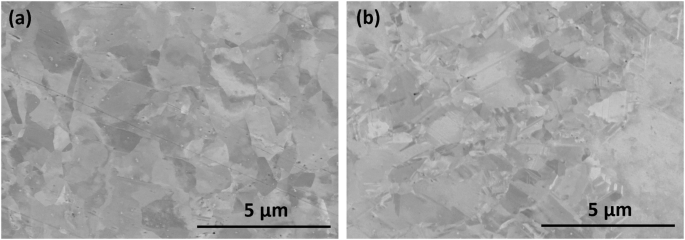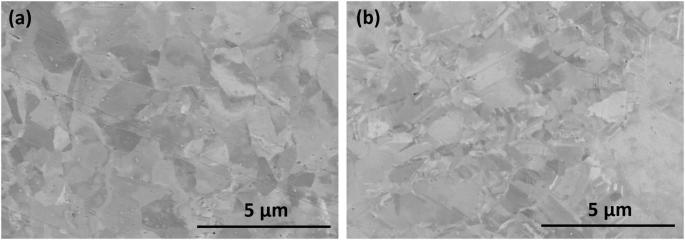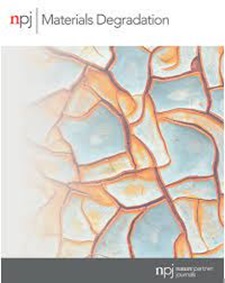电沉积铜的氢脆和应变速率敏感性:第一部分 - 氢含量的影响
IF 7.6
2区 材料科学
Q1 MATERIALS SCIENCE, MULTIDISCIPLINARY
引用次数: 0
摘要
对作为废核燃料容器候选涂层材料的电沉积铜进行了慢应变速率拉伸测试。在含 26.4 ± 1.0 ppm 氢的电解沉积铜中观察到了脆化现象,脆化对应变速率很敏感,因此在较低的应变速率(5 × 10-7 s-1)下脆化会加剧。与在室温下进行的试验相比,在 100° 和 200 °C 下进行的拉伸试验也会加剧脆化。相比之下,在所有测试的应变速率和温度下,仅含有 5.25 ± 0.97 ppm 氢的电沉积铜都表现出延展性。这些发现表明,只要氢浓度足够高,以前无法解释的慢应变速率氢脆就会在电沉积铜中发生。进一步的分析表明,脆化铜的变形是通过内部微裂纹的形成实现的,这些微裂纹会在失效点凝聚。本文章由计算机程序翻译,如有差异,请以英文原文为准。


Hydrogen embrittlement and strain rate sensitivity of electrodeposited copper: part I – the effect of hydrogen content
Slow strain rate tensile testing was conducted on electrodeposited copper, which is a candidate coating material for used nuclear fuel containers. Embrittlement was observed in electrodeposited copper containing 26.4 ± 1.0 ppm hydrogen, with a strain rate sensitivity such that the embrittlement was exacerbated at lower strain rate (5 × 10−7 s−1). Tensile tests conducted at 100° and 200 °C also intensified embrittlement when compared with tests conducted at room temperature. In contrast, electrodeposited copper containing only 5.25 ± 0.97 ppm hydrogen exhibited ductile behavior at all tested strain rates and temperatures. These findings suggest that a previously unexplained slow strain rate hydrogen embrittlement can operate in electrodeposited copper provided that the hydrogen concentration is sufficiently high. Further analyses revealed that the deformation of embrittled copper is achieved by the formation of internal microcracks which coalesce at the point of failure.
求助全文
通过发布文献求助,成功后即可免费获取论文全文。
去求助
来源期刊

npj Materials Degradation
MATERIALS SCIENCE, MULTIDISCIPLINARY-
CiteScore
7.80
自引率
7.80%
发文量
86
审稿时长
6 weeks
期刊介绍:
npj Materials Degradation considers basic and applied research that explores all aspects of the degradation of metallic and non-metallic materials. The journal broadly defines ‘materials degradation’ as a reduction in the ability of a material to perform its task in-service as a result of environmental exposure.
The journal covers a broad range of topics including but not limited to:
-Degradation of metals, glasses, minerals, polymers, ceramics, cements and composites in natural and engineered environments, as a result of various stimuli
-Computational and experimental studies of degradation mechanisms and kinetics
-Characterization of degradation by traditional and emerging techniques
-New approaches and technologies for enhancing resistance to degradation
-Inspection and monitoring techniques for materials in-service, such as sensing technologies
 求助内容:
求助内容: 应助结果提醒方式:
应助结果提醒方式:


